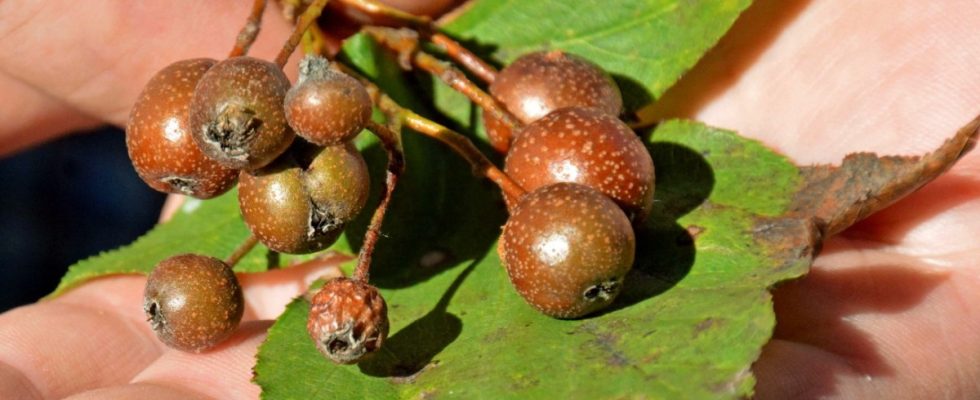The serviceberry or Sorbus torminalis is an absolute exotic among the local tree species. “When it comes up, there will be a few hundred thousand specimens in the mixed deciduous forests on the Franconian Plateau, in the Franconian Jura and in the Upper Bavarian Five Lakes Region,” says forestry scientist and long-time head of the State Institute for Forestry and Forestry, Olaf Schmidt. He is one of the best experts on the forests in Bavaria. “Compared to the beech or oak trees in Bavaria, their proportion is practically unmeasurable.”
In the future, the serviceberry could of course play a much larger role in the forests in the Free State. The reason: It copes very well with drought, tolerates a lot of heat and can also withstand frost. These are important characteristics in times of climate crisis. The Bavarian State Forests (BaySF) and the Office for Forest Genetics have now planted 560 particularly high-quality serviceberries for seed production in a plantation in the Garatshauser Forest in the south of Munich – so that the foresters in Bavaria can in the future bring more serviceberries into the forests.
“The serviceberry’s tolerance to drought and summer heat makes it an important building block for forest conversion,” says a BaySF spokesman. “Basically, our goal is for our forests to consist of at least four tree species.” Fir, oak and beech, as the most common native tree species that are coping comparatively well with the climate crisis, have priority. “We also rely on older and currently rare tree species,” says the spokesman. Like the serviceberry.
Sorbus torminalis, which is also popularly known as “Beautiful Else”, is a rose family. It grows to around 20 to 25 meters high and up to 200 years old. Their foliage is similar to that of the maple; it turns yellow, orange and even deep red in autumn. In spring it produces lush white flowers that are often visited by bees and other nectar-sucking insects. Their inconspicuous red-brown berries are very popular with birds and can also be made into jam, juice or jelly. You can also make a fine schnapps from them. In folk medicine, the berries are used against diarrhea. That’s why the serviceberry is also known as the “ruhr tree”.
“By far the most expensive local wood”
The wood is similar to that of the pear tree. “It is very hard and high quality and by far the most expensive domestic wood,” says expert Schmidt. “It is used, for example, for high-quality paneling for conference halls or ICE trains.” But it is also used in instrument making; recorders, for example, are often made from serviceberry wood. Young serviceberries have a smooth gray bark, the bark of older specimens is dark brown and longitudinally cracked.
And why is the serviceberry so rare? “It’s very uncompetitive,” says Schmidt. “This means that the young serviceberries find it very difficult to assert themselves against other tree species in the forests.” In particular, they can hardly compete with the extremely strong beech, which is not without reason the most common native deciduous tree species. “In addition, foresters and forest owners didn’t really appreciate them for a long time,” says Schmidt. “They have done little to make it more common.”
That’s changing now. In 2018, the BaySF planted around ten hectares of new crops with 30,000 small serviceberries across Bavaria. Last year there were already 30 hectares with around 90,000 young plants. “Compared to the oak, for example, that is still relatively little – here we recently had 160 hectares of plantings with a million plants and another 130 hectares of seeds,” says the spokesman. “But that’s also because we’ve had so few serviceberry crops so far.” The new plantation in the Garatshauser Forest will help.

